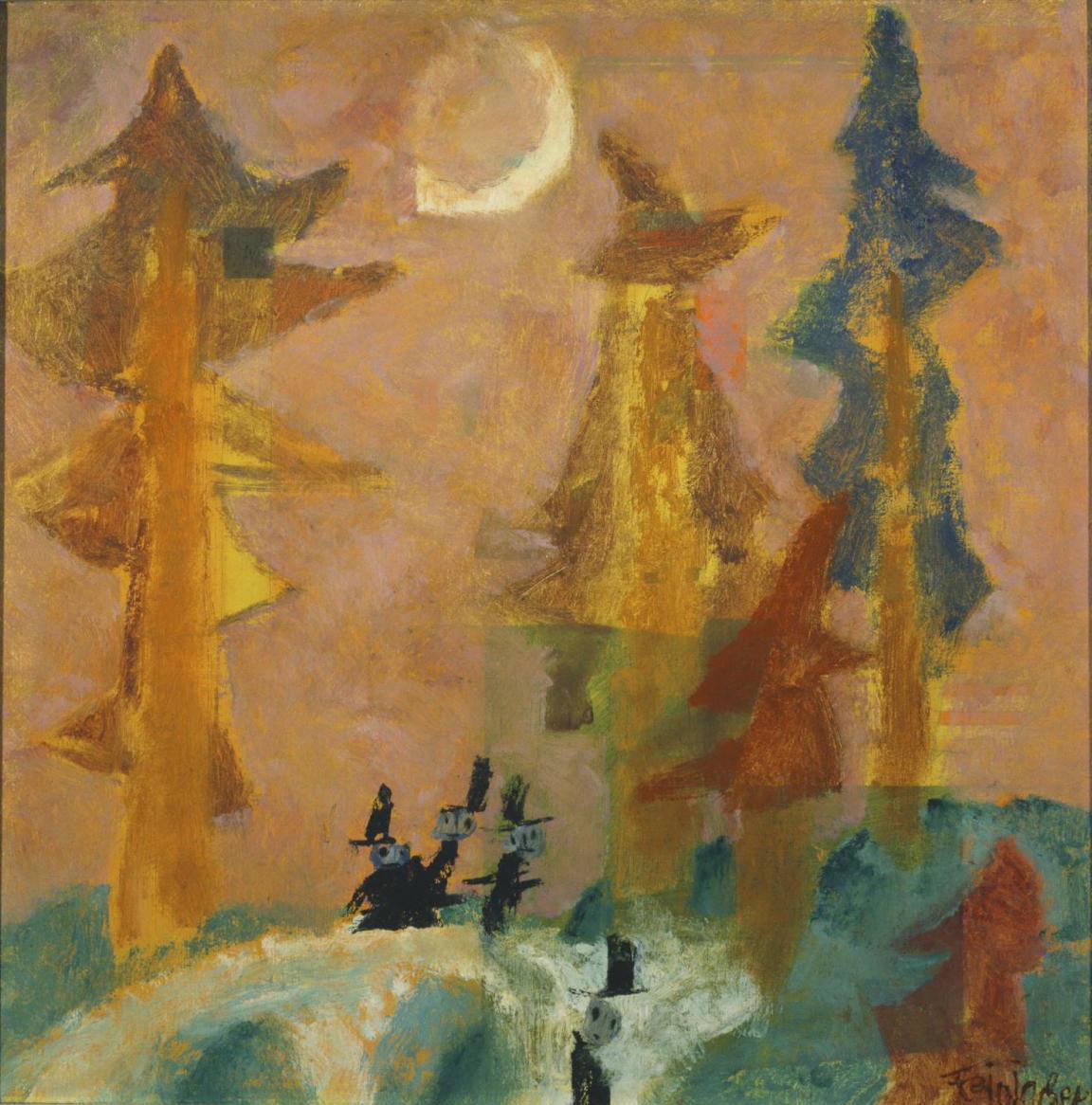Spook I
Lyonel Feininger ( 1940 )

When Lyonel Feininger returned to America in 1937, he was at first hesitant to resume painting. Overwhelmed by new sights and sounds, he preferred simply to re-experience his birthplace. As he wrote in 1937:
I am in a very unusual frame of mind, at present. Imagine the almost unprecedented home-coming of an American, after nearly 50 years entire absence (with not one visit in the intervening years!), to his native city. The changes that have taken place in that period of time are astonishing enough….There is nothing that does not affect me in some way.
Feininger’s return to painting in 1939 was noted by his wife, Julia, in her diary: “Leo paints.”
Feininger was a German Expressionist painter, most closely related with the Blaue Reiter and Bauhaus movements of the early Twentieth Century. Based in Berlin, he was offered and accepted a summer teaching position at Mills College in California in 1936, and returned to the US in the summer of 1937. Following the political turmoil brewing in the German Republic, he relocated to the US permanently. Not yet ready to depict the American landscape, Feininger turned to his early Expressionist style for inspiration, using in Spook I the fairy-tale apparitions and goblin-like creatures that had populated his cartoons of the 1890s and early 1900s. His fascination with such images stemmed partly from a childhood memory of striped-suited prisoners on Blackwell Island in New York: “[T]his made a wretched impression on me—in consequence I took to drawing ghosts for a while and this may have laid the foundation for my later work, fantastic figures and caricatures.” The composition is based on a tiny watercolor entitledLittle Ghosts, Friendly Ones that he had painted to accompany an entry in a guestbook in 1922.
Reworking such imagery provided a period of respite and a transition into his late graphic style. Feininger later noted that “…the formal treatment of these grotesque distortions served me when I turn my hand to more weighty compositions; and also, because I enjoy harking back to drolleries….”
Duncan Phillips, whose awareness of German expressionism grew in the mid-thirties, probably first became interested in Feininger when he was represented in the 1941 Corcoran biennial exhibition. Attracted to the oil painting, Phillips immediately wrote to Feininger. He also proposed holding a solo exhibition of Feininger, asking Curt Valentin of the Buchholz Gallery in New York to send seven paintings. Although the exhibition never took place, Phillips purchased Spook I from this group. His interest in the artist continued, and in 1949 the Phillips was a venue for the Boston Institute of Contemporary Art’s exhibition Jacques Villon, Lyonel Feininger.